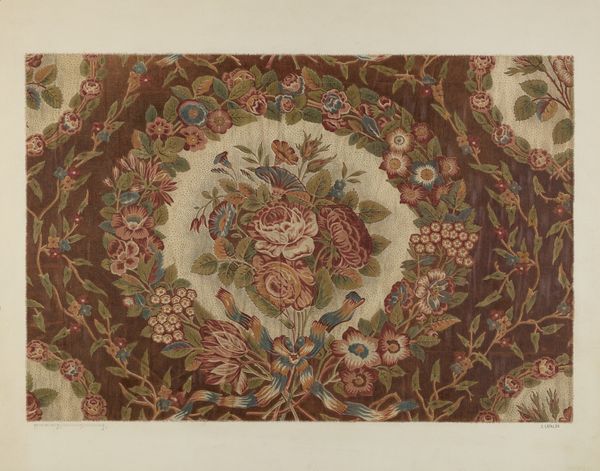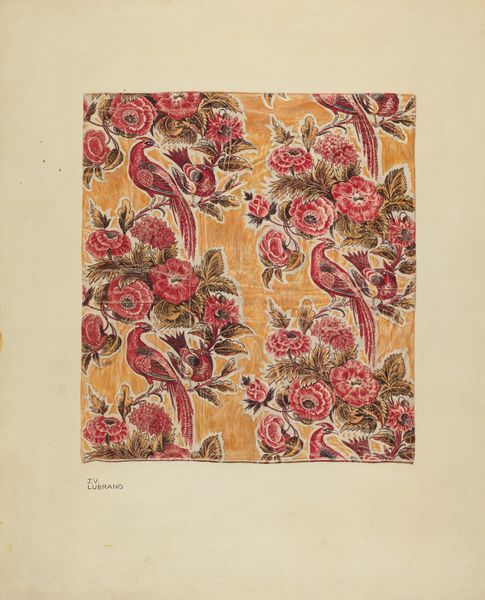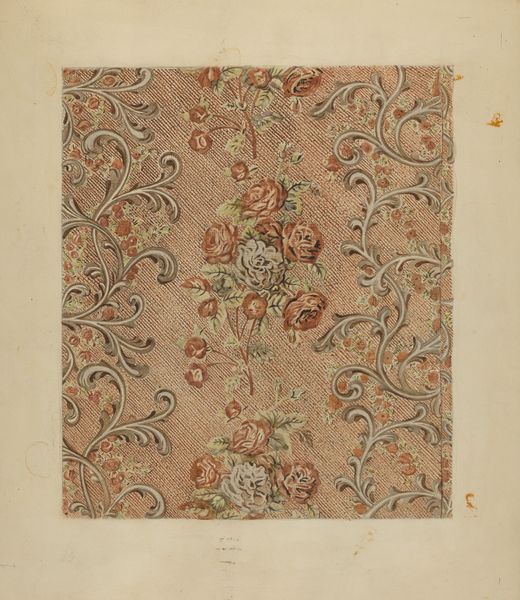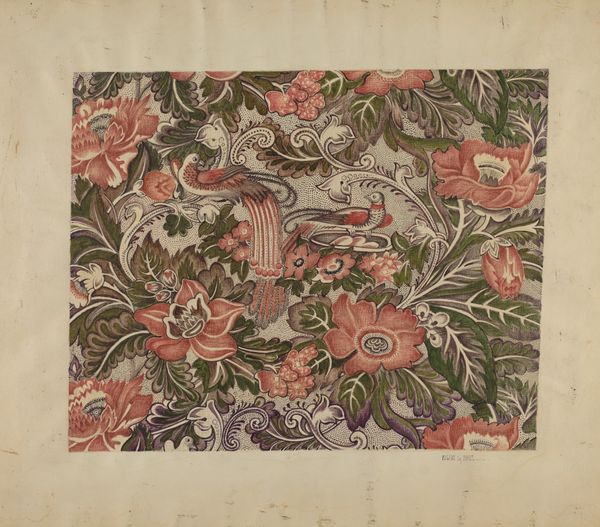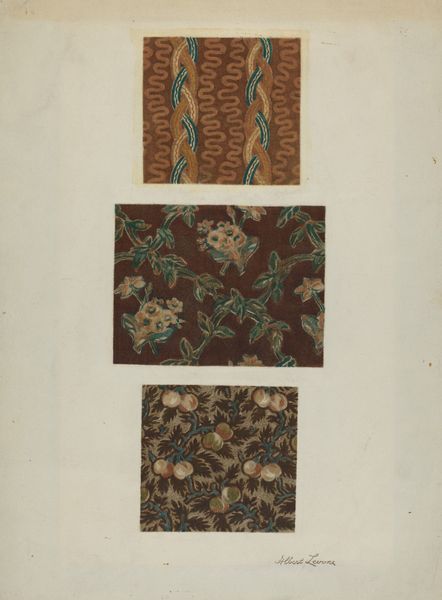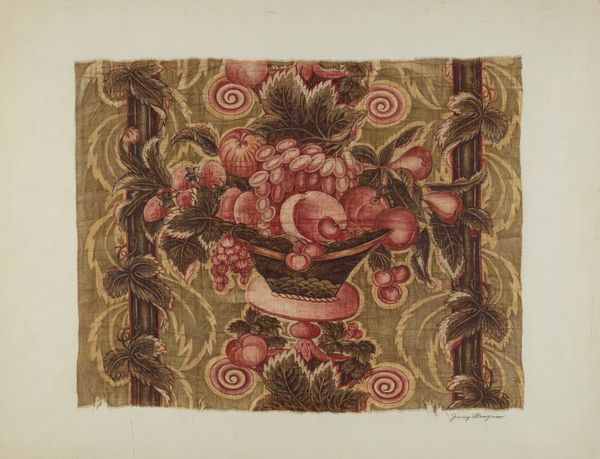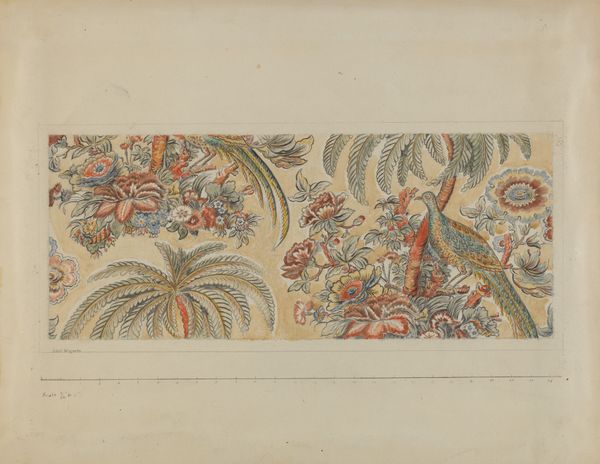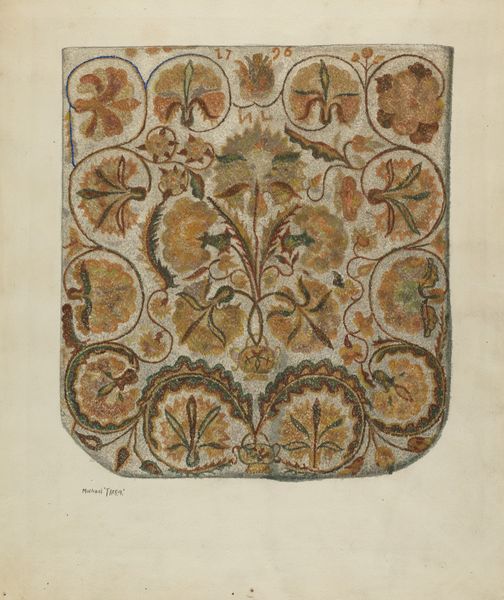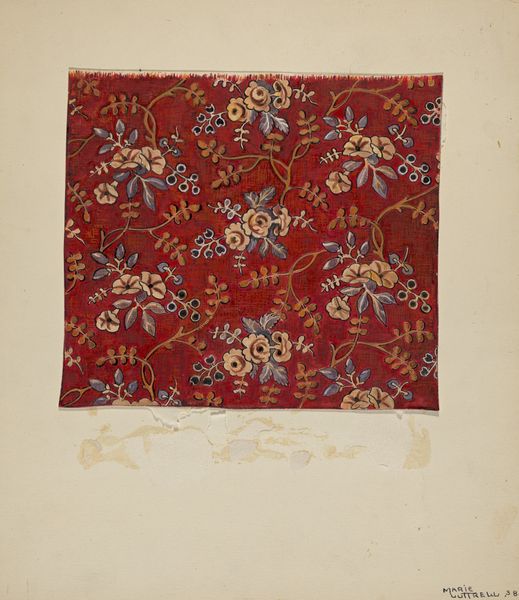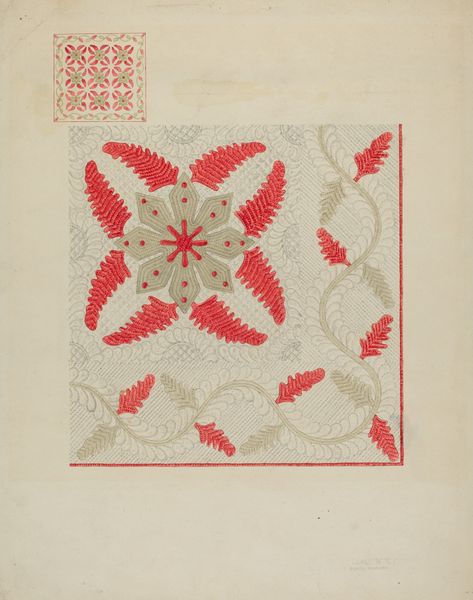
drawing, coloured-pencil, watercolor
#
drawing
#
coloured-pencil
#
water colours
#
watercolor
#
coloured pencil
#
watercolour illustration
#
decorative-art
#
watercolor
Dimensions: overall: 45 x 35 cm (17 11/16 x 13 3/4 in.) Original IAD Object: 26" wide
Copyright: National Gallery of Art: CC0 1.0
Curator: This drawing, entitled "Printed Cotton," dates from around 1940. It's rendered in watercolor and coloured pencil and signed by Suzanne Roy. What are your initial thoughts? Editor: My first impression is of something at once very controlled and yet also somehow organic. The strict geometry overlaid with these quite lovely botanical motifs creates an interesting tension. Curator: Exactly! I see a deliberate effort to merge natural and geometric forms—a recurring theme in textile design intended for the domestic space during this period. The grid, doesn't it almost feel like a grounding structure? Editor: Absolutely. It's interesting how the artist uses that grid as both a frame and a counterpoint to the flowers. Each square where the stripes meet, contains other, almost contrasting geometric motifs. I’m wondering if that grid also serves to repeat certain color elements. Curator: Perhaps. The botanical imagery would undoubtedly resonate. Flowers and foliage have been loaded with cultural meanings regarding home, beauty and fertility for centuries. Think of the countless still life paintings and decorative arts that draw on the same well. Editor: You know, there's something quite serene about the palette here as well. That muted range, those browns and greens and hints of faded blues really evoke the mid-century. I think that speaks volumes, and also subtly about a kind of conservative appeal. Curator: Yes, it certainly feels very of its time. There's also, I think, something subtly melancholic about these colors. The subdued tones communicate this sense of nostalgia. Editor: It's true. And that overall quietude and subdued feeling only enhances that feeling. I would find it hard to think of a bold geometric pattern overlaid on some kind of bright floral scene eliciting the same degree of reflective tranquility. Curator: Indeed. Well, thinking about this “Printed Cotton” design, it’s made me realize again how much these sorts of everyday patterns reflect broader societal trends. Editor: I completely agree. It reveals something quiet and comforting, perhaps the desire to connect a modern geometric structure with natural organic shapes to generate both harmony and order.
Comments
No comments
Be the first to comment and join the conversation on the ultimate creative platform.
